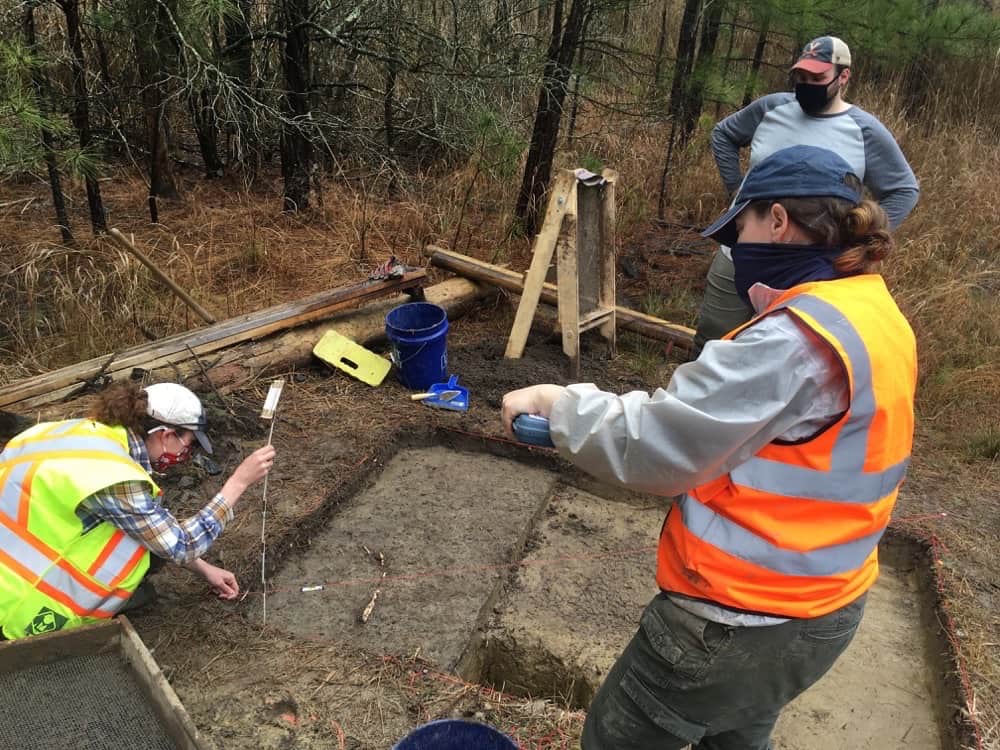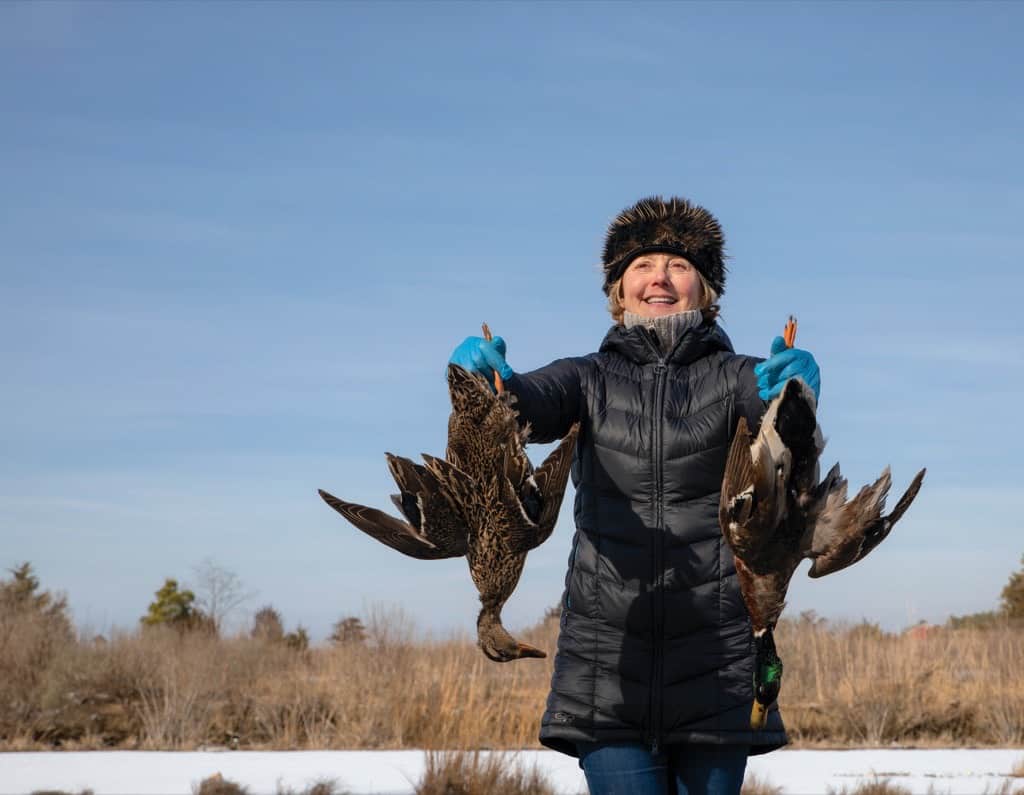An archaeological dig turns up a piece of Harriet Tubman history
In the swamps and lowlands around the Chesapeake Bay, legends tell of treasures: the fortune that the ghost of Big Lizz guards, the buried treasure at the ruins of the Warwick Fort Manor House, or the lost gold of the pirate William Kidd. It turns out that the swamps have treasures based in reality, too. In the early months of 2020, U.S. Fish and Wildlife Service Refuge Manager Marcia Pradines thought a partnership between the federal government and state of Maryland might be able to find something priceless.
“We are going to acquire some property that may have Ben’s Ten on it,” archaeologist Julie Schablitsky remembers Pradines telling her. This wasn’t 10 chests of gold, but 10 acres that had belonged to Ben Ross, Harriet Tubman’s father, who was also enslaved in Dorchester County, Md.
Schablitsky is chief of the Cultural Resources Division at the Maryland Department of Transportation and although she hadn’t heard of Ben’s Ten, she knew that it was a great opportunity. She had previously done digs related to the Eastern Shore’s African American history and she knew if they found something, they could add it to the Harriet Tubman Underground Railroad Byway, a 223-mile driving route that highlights 45 places in Maryland and Delaware connected to Tubman’s story and the Underground Railroad.
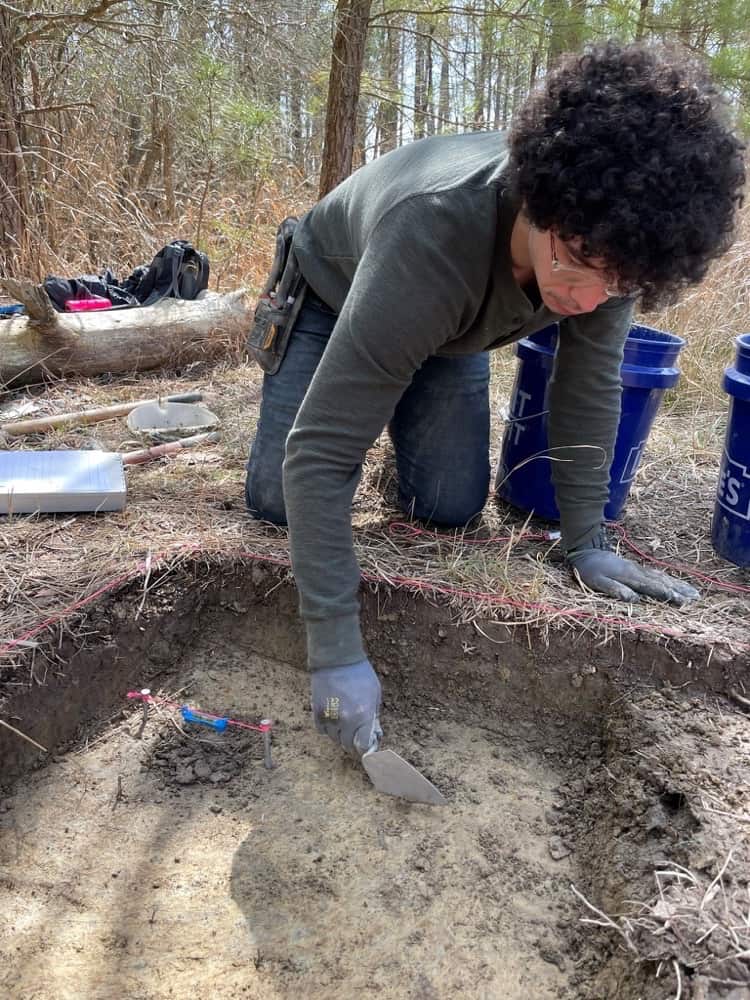
Within a year of the purchase of what is known as the Peter’s Neck property, archival research, surveys of the land, and two digs led to an amazing discovery: the place where Ben Ross had once lived and where Tubman spent some of her formative years before escaping slavery and becoming one of the most well-known conductors on the Underground Railroad.
A chorus of birds and frogs provided the soundtrack for the mid-April announcement of the find at the Harriet Tubman Underground Railroad Visitor Center, as a bald eagle soared overhead. The surrounding farmland, forests, and marshes were where Tubman’s life began, and where she decided that she would not live out her life in bondage.
Tubman’s mother Harriet (or Rit) Green met Ben Ross around 1803 on Anthony Thompson’s farm in Dorchester County. Thompson owned Ross and had married Mary Brodess, who owned Green. While Ross and Green could choose to have a family together, Thompson and Brodess, as slave owners, controlled almost every aspect of Ross and Green’s lives, including where they would live. Around 1808, Green gave birth to their first daughter, Linah, then to Mariah Ritty, Soph, and Robert before Tubman’s birth in 1822. The law determined that Tubman (named Araminta by her parents) was enslaved to whomever her mother belonged to. In this case, that was Edward Brodess, who was under the guardianship of Thompson and had inherited his mother Mary’s property after her death. About two years after Tubman’s birth, Brodess moved from Thompson’s property to Bucktown, forcing Green to come with him and splitting up the family.
As with any hunt for buried treasure, the archaeologists started with maps. In Bound For The Promised Land: Harriet Tubman, Portrait of an American Hero, Kate Clifford Larson outlines Ben Ross’s terms of manumission, with the 10 acres he was supposed to be given on the “west side of Harrisville Road”—a road that still borders Peter’s Neck and Blackwater National Wildlife Refuge. Ross was a skilled laborer, a timberman whose knowledge of trees and timbering made him the highly valued manager of Thompson’s forested land. When Thompson died in 1836, he wrote in his will that Ross should be freed and given the land five years after Thompson’s death.
“Land deeds over time had mentioned ‘old Ben’s place’ alongside the road, [and] in this location by the water, and putting those clues together, we had a search area,” says Schablitsky.
In August 2020, a team led by Schablitsky and Pradines went to look at the property. The ground was wet and muddy, with streams running through it, and Schablitsky knew that finding anything here—even armed with the general location of the property—would be difficult, if not impossible. But archaeologists are optimists—they have to find a reason to take the next shovel of dirt out of the ground. In this case, the whole team understood both how historically significant the find would be and that those swampy conditions would mean continued deterioration of the site. They had to act quickly. “If it’s here, we are going to find it,” Schablitsky resolved.
A few months later, in November, with fewer bugs and cooler temperatures, the team trekked out to the property again. In the search area, they started digging test holes, none of which turned up anything interesting. “After a thousand holes, I started thinking, where is this place?” says Schablitsky.
Instead of a shovel, she grabbed her metal detector and started scanning the road in hopes of finding a nail or other metal building material. Instead, she found a 50-cent Liberty coin from 1808. On the archeology side, this was significant because it meant that people had been in this area in the early 1800s. If archaeologists believed in messages from history, the find had that too. 1808 was the year that Ben Ross and Harriet Green started their family, and liberty was what Tubman achieved not only for herself, but about 70 people she helped escape slavery. Then the team found pottery shards, a “calling card” of a place where people lived, says Schablitsky.
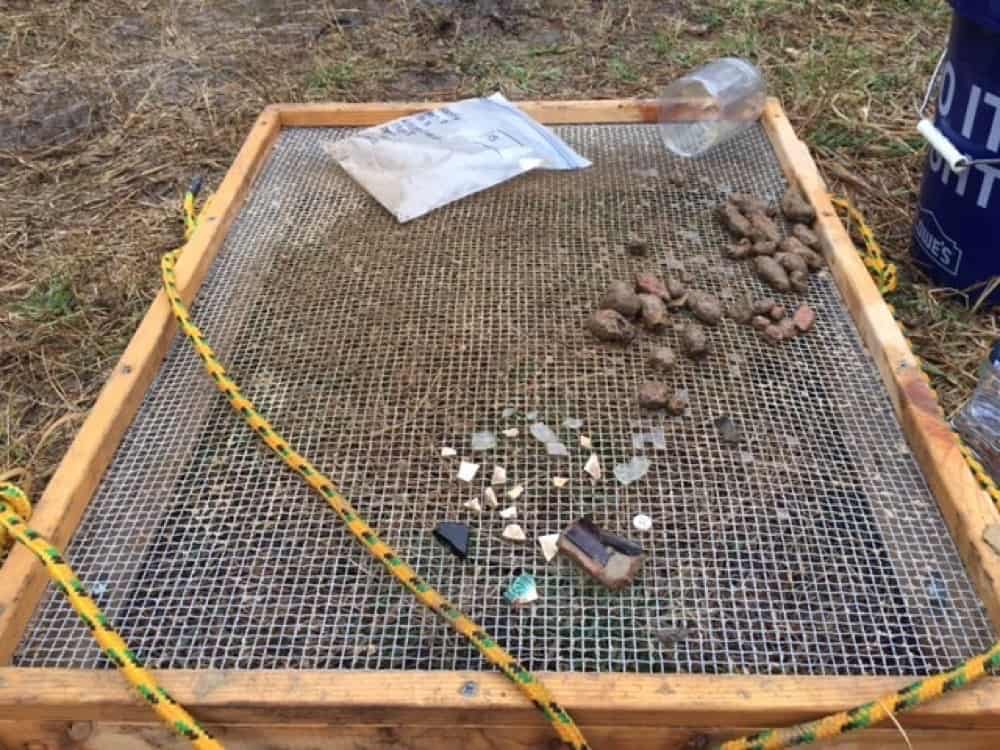
The team ran out of time and money, says Schablitsky, but they were inspired to come back. So in March 2021, the team began digging 5′ x 5′ areas, and “each unit that we dug revealed more and more information, artifacts dating to the first half of the 19th century,” says Schablitsky. Then they found a brick, which Schablitsky believes formed a pier that Ross’s wooden cabin would have sat on. They found buttons, pipes, drawer pulls, and more pieces of pottery dating to the 1830s and 1840s, when Ben Ross was living in the area. This was also the only spot in the area that had evidence of a residence, and at that point they were confident they had found Ben Ross’s home.
After Tubman, her mother, and her siblings were forced to leave Anthony Thompson’s land, Ben Ross remained there, working and living in the area that Schablitsky’s team had been searching. But Ross was also still able to see his family. Tubman’s four younger siblings—Rachel, Ben, Henry, and Moses—were born between 1823 and 1832. Although the experience of the Ross-Green family wasn’t that of the large cotton plantation farther south, slavery in Maryland was still brutal. As children, Tubman and her siblings were hired out to work, which was a way that Brodess could earn money from their labor even if they weren’t working for him. With no regard for the Ross family, Brodess also sold Linah, Mariah Ritty, and Soph out of Maryland. In her early teens, Tubman suffered a devastating head injury when an overseer attempted to hit an enslaved boy with an iron weight but hit Tubman instead. She recovered from a fractured skull and was forced to keep working. By her later teens, Brodess allowed Tubman to hire herself out, which meant she kept part of her wages and paid Brodess the rest. Tubman began working in timber yards and on docks, in the same area where her father worked, and had the opportunity to learn from him and visit his home near the Blackwater River.
The ceramic shards and pieces of pipes found at the dig were what captured Tina Wyatt’s attention. During each dig, Schablitsky had been texting photos of the finds to the descendants of Ben Ross, which was the next best thing to actually being out on the dig, says Wyatt, who is Tubman’s great-great-great grandniece and Ross’s great-great-great-great granddaughter. On a personal level, these artifacts help her visualize the lives of her ancestors. She could see Ben smoking one of those pipes and teaching Harriet about the landscape and how to navigate it, skills that would allow her to help others escape to freedom. “She embraced this environment—not her circumstances, but her environment,” says Wyatt.
Working in the marshes and forests of Dorchester County, Tubman would have learned how to navigate the woods. From Black mariners who transported timber to Baltimore, she could have heard the latest news and learned how to move along the waterways. In 1844, she married a free Black man named John Tubman, but five years later, that marriage was threatened when Brodess died. Harriet could easily have been sold away from John and the rest of her family, so she resolved to run away. On October 3, 1849, Brodess’s widow Eliza put out an advertisement in the newspaper looking for the return of “Minty,” and her younger brothers Harry and Ben.
Tubman, who had changed her name to Harriet, was not content with leaving her family in a slave state. White abolitionists and Quakers helped Tubman’s rescue missions, as did her father. Ross had used his earnings as a free man to purchase his wife around 1855. Around the same time, he was suspected of helping runaways in the area. In fact, Harriet had met her brothers at their father’s home on Christmas 1854 and led them north. A few years later, Ross was suspected of helping a group of eight people escape from bondage in Cambridge. With the risk of an imminent arrest, Tubman returned to her parents in 1857 and brought them to Philadelphia.
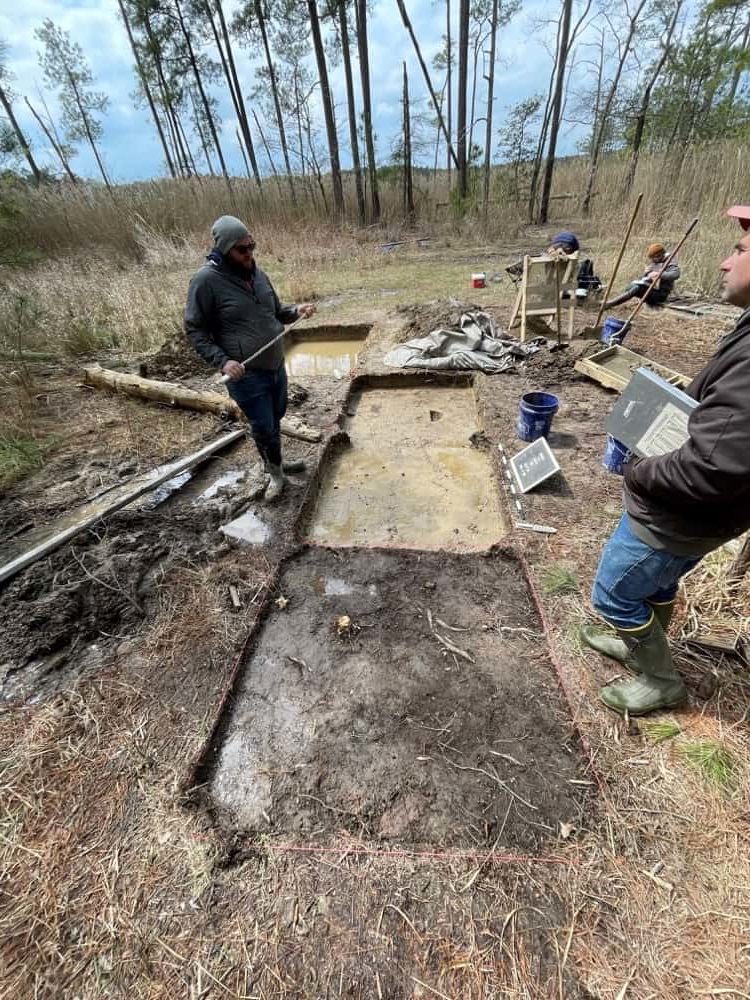
Wyatt feels like the information the archaeology provides dispel myths about the lives of the enslaved, and that discovering more artifacts will not only tell the story of her family but will help tell the story of enslaved life more broadly. “When she [Schablitsky] showed us the fragments of some of the plates, I looked at them and said, wow. I didn’t expect to see something like this used by enslaved people,” says Wyatt. “It’s so important not just for the family, but for the world to understand our history, to be able to understand the differences between the different types of plantations and farms” and the ways enslaved people lived, she says.
At the time of the announcement, Schablitsky and her team had only excavated about 25 percent of the site. They plan to continue archaeology work to find out as much as they can about Ross’s property and who lived there in addition to Ross, but they also need to do it quickly. Over the next 100 years, “the area is predicted to naturally convert to marsh, with parts remaining forested,” says Pradines.
Schablitsky says they are already fighting rising water at the site. “We’ll excavate down about a foot and if we step away and come back the next day, water would have come into the hole,” says Schablitsky. When “you are excavating soup,” you don’t get the vertical and horizontal controls needed for archaeology work, she says. In this case, however, they are saved by the fact that the archaeology is pretty basic, with a discreet location and only one layer of time, the 1820s to 1850s, so they know that all the items are from the time when Ross lived here.
Sea level rise isn’t just a problem for the Ross homeplace site, but for other African American heritage sites across the Chesapeake region. “Shorelines are beginning to be eaten away and the water table is getting higher,” says Schablitsky. In April 2021, the scientific research and reporting nonprofit Climate Central published a report on the future flood risk for the Harriet Tubman Underground Railroad Byway. They noted that because many of the sites are just “a few feet above sea level, coastal flooding already poses a significant risk to many of these sites.” They also predict that this risk of flooding will “increase dramatically” as sea levels rise in the next 50 to 100 years.
The stops on the Byway are some of the over 44,800 archeological sites and almost 3,150 National Register of Historic Places-eligible properties in Maryland and Virginia that are less than 50 meters above sea level. The vast majority of these historic places are in the Chesapeake Bay watershed, and experts believe that with sea level rise, they “will be submerged and hence lost or damaged.” The Chesapeake includes not only the earliest places associated with African American history in the United States, like Point Comfort, Va., but also sites of freedom and struggle, from Baltimore’s Fells Point, where Frederick Douglass learned to read and began his escape to freedom, to Bethel A.M.E. Church in Cambridge, the center of the Civil Rights movement on Maryland’s Eastern Shore.
Wyatt believes that the collaboration that led to the discovery of Ross’s home should be a model for the rediscovery and preservation of African American history. While the Harriet Tubman Museum and Education Center and other grassroots efforts kept Tubman’s memory alive on the Eastern Shore, she says, the backing from the state of Maryland and various federal agencies working together were what made this discovery possible. And soon, Hershel Johnson, a Dorchester County historian who has been working hard to educate the public about Tubman’s time in Maryland, hopes to be able to lead visitors to the place where he, Wyatt, Schablitsky, and others feel Tubman developed practical skills and furthered a humanitarian outlook which allowed her to become a heroic Underground Railroad conductor, spy for the Union army during the Civil War, and suffragist who fought for women’s rights.
Kristina Gaddy writes about history and culture. Her nonfiction book Flowers in the Gutter came out in January.

